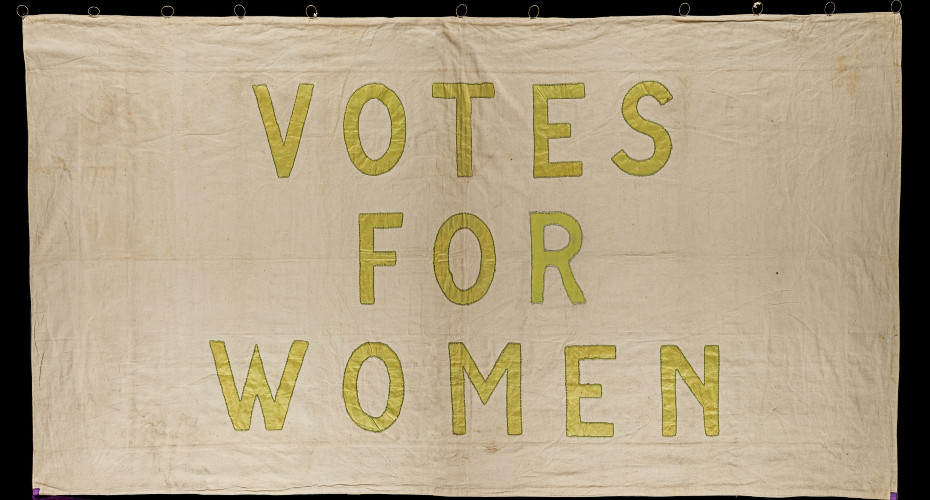Female MP pioneers lost unique appeal to voters because of increasing party control over campaigning, study shows

The first women parliamentary candidates built on the suffrage campaigners’ argument that there was a distinctive woman’s point of view that needed to be represented at Westminster by women
Early women parliamentary candidates found it harder to make unique appeals to represent the ‘woman’s point of view’ over time because of increasing national control over campaigning, a new study shows.
The increasing trend for men to present themselves as diligent workers for their constituents’ welfare and keen supporters for social reform also meant they challenged the idea that only female politicians could represent their sex properly in parliament, researchers have found.
The first women parliamentary candidates built on the suffrage campaigners’ argument that there was a distinctive woman’s point of view that needed to be represented at Westminster by women. These pioneers tended to place a great deal of emphasis on their independence.
But from the late 1920s onwards it became increasingly common for women candidates to instead focus on outlining key points from party manifestos in their election literature. The growing influence of Labour meant that all parties encouraged their candidates to focus on promoting their programmes.
Lisa Berry Waite, Records Specialist at The National Archives who completed her PhD at the University of Exeter, and David Thackeray, from the University of Exeter, studied the surviving election addresses of early women parliamentary candidates. They also examined surveys by Mass Observation (MO), a social investigation organisation, who asked voters from 1938 onwards how they felt about having a female MP and did detailed fieldwork in areas with women politicians.
The public told surveyors female politicians should be knowledgeable about issues related to the home, welfare, and social services and be able to uphold the ‘woman’s point of view’ at Westminster.
Mass Observation’s surveys showed there was little overt hostility to female politicians, but only 21 of the 127 women who stood at the 1950 election were victorious. It was not until the 1987 general election that women made up more than five per cent of British MPs.
Dr Berry-Waite said: “In the early years after women gained the right to stand for parliament they often based their campaigns around the claim that the ‘woman’s point of view’ needed to be better represented by having more female MPs at Westminster. This became less common over time as electoral politics became more programmatic, especially among Labour politicians.
“By the 1940s it had become more difficult for individual female candidates to develop a distinct and electorally compelling claim to represent the ‘woman’s point of view’ in parliament should they have wished to do so. Many people Mass Observation surveyed claimed that the most effective way to ensure effective welfare provision and social services was to vote for the party with the best programme.”
After 1918 the written election address – sent free to every home – became the key document in local campaigning. Female politicians used their addresses to highlight their expertise and argue that the ‘woman’s point of view’ needed to be better represented at Westminster. During the 1922, 1923, and 1924 general elections female candidates were twice as likely to refer to ‘women’s issues’ as their male opponents.
The significance of the election address in relation to the party manifesto gradually declined as the latter became increasingly central to notions of a government’s mandate. As politics grew more programmatic, election addresses became increasingly standardised in format, often drawing on material produced by central office and mimicking the language of party manifestos. This made it less likely for female candidates to make unique claims to represent the ‘woman’s point of view’ and in any case many candidates focused largely on outlining their party programme, downplaying the importance of their gender.
There were differences between the parties, however. Conservative women such as Nancy Astor, Thelma Cazalet and the Duchess of Atholl proved more reluctant than Labour candidates in the 1920s and 1930s to focus on outlining party programmes.
From the early 1920s onwards several male candidates sought to develop their own credentials as keen social reformers and ‘family men’, with some picturing themselves with their children in their election addresses. This was a tactic often employed by Conservative and Liberal candidates keen to imply that their Socialist opponents threatened the safety of the home. The growth of programmatic politics was advantageous for male candidates who could claim that the most effective way to further ‘women’s interests’ was to vote for the party with the best manifesto. In 1929 several male Labour candidates included nearly identical paragraphs in their election addresses, with the subheading ‘Labour’s Appeal to Women’ with copy presumably provided by central office.
And yet, the difficulties which female candidates faced in arguing that women’s representation at Westminster should be significantly expanded were a product of the particular political circumstances which Britain faced during the early decades of mass democracy. By the 1940s and 1950s programmatic politics had triumphed with the advent of the modern welfare state.
From the 1960s onwards earlier paternalistic codes of political leadership came under challenge in Britain as well as other parts of western Europe. Growing frustrations with the records of the two main parties in government led to breakthroughs by challenger parties such as the Liberals and Scottish National Party (SNP). These challengers focused more on community politics and the personalities of individual candidates than national programmes for government. Women such as Winnie Ewing, the Scottish nationalist, became important torchbearers for these new movements.



